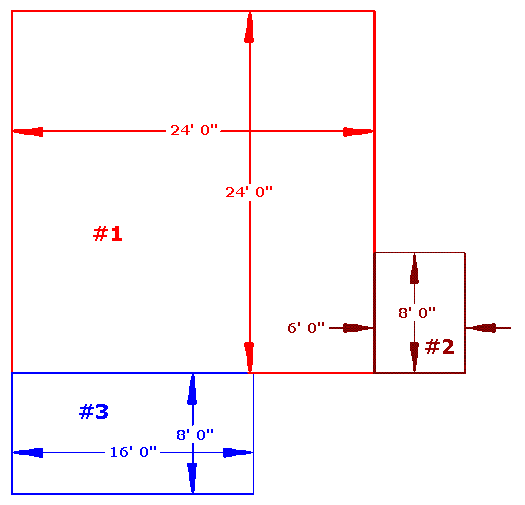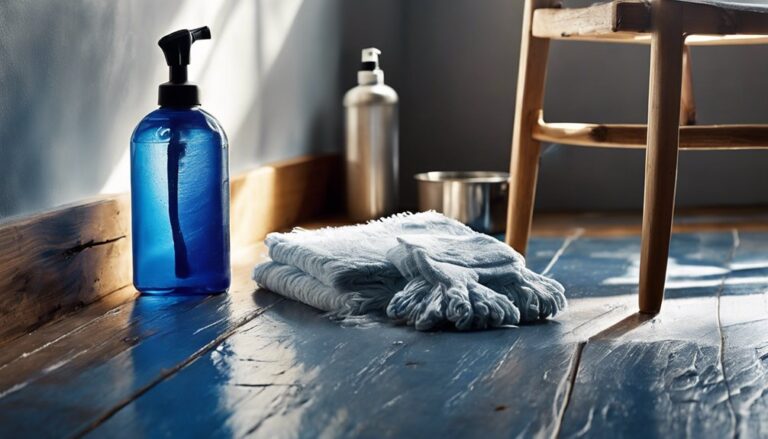Are you planning a home renovation or perhaps just a simple room makeover? Whether you’re installing new hardwood, tile, or carpeting, knowing how to calculate the square footage of your flooring is crucial.
It’s not just about buying the right amount of materials but also about saving money and avoiding waste. Imagine the relief of walking into a flooring store, confident in the exact measurements you need. This guide will show you how to figure out flooring square footage with ease and precision.
Ready to transform your space without the guesswork? Let’s dive in and make sure you get it right the first time. Your dream floor awaits!

Basic Tools Needed
To measure flooring, you need a few basic tools. A mètre à ruban is essential. It helps in getting accurate measurements. Use a notepad to jot down numbers. This will keep track of each room’s size. A calculator is helpful. It makes adding and multiplying easier. A pencil is handy for marking areas on the floor. Lastly, a plan d'étage of your home can be useful. It shows how rooms connect. With these tools, measuring floor space becomes simple.
Measuring Room Dimensions
Measure the length and width of the room. Use a tape measure for this. Multiply the length by the width. This gives the square footage. Example: a room is 10 feet long and 12 feet wide. Total square footage is 120 square feet.
Break the room into smaller rectangles or squares. Measure each piece separately. Add the square footage of each piece. Example: one part is 50 square feet, another is 30 square feet. Total square footage is 80 square feet.
Measure each room separately. List each room’s square footage. Add all the rooms together. Example: Room one is 100 square feet, room two is 150 square feet. Total is 250 square feet.
Converting Measurements
Calculating flooring square footage involves measuring the room’s length and width in feet. Multiply these numbers for the total. This simple process ensures accurate measurements for your flooring project.
Feet To Inches
To convert feet to inches, remember that one foot is equal to 12 inches. Multiply the number of feet by 12. For example, if you have 5 feet, multiply by 12 to get 60 inches. Always use multiplication for this conversion.
Inches To Feet
Inches to feet conversion is simple. Divide the number of inches by 12. For instance, 24 inches divided by 12 equals 2 feet. Keep the division method in mind for converting inches to feet.

Calculating Square Footage
To find square footage, multiply the longueur by the width. Measure in feet. For example, a room is 10 feet long and 12 feet wide. Multiply 10 by 12. The result is 120 square feet.
Break odd shapes into smaller rectangles or squares. Measure each part separately. Add all the square footages together. This gives the total area. It works for L-shaped rooms too.
Some areas may not need flooring. Like under heavy furniture. Subtract these areas from the total. Measure and calculate them separately. This ensures you buy the right amount of flooring.
Estimating Extra Material
Always plan for extra flooring material. Floors need some extra pieces. This is due to cutting and mistakes. Wastage allowance is the term used. It means extra material needed beyond the floor space. Usually, add 5% to 10% more. This helps cover errors and cuts.
Patterns require careful planning. Aligning patterns needs more material. Add extra for this. Patterns might need another 10%. This helps in matching design. Calculate total space, then add extra for patterns.

Using Online Calculators
Online calculators make it easy to measure flooring space. They save time and are simple to use. You only need basic numbers like room length and width. Calculators can handle odd shapes too. Just enter each section separately. But remember, calculators rely on accurate input. Mistakes in measurements can lead to errors. Always double-check your numbers before entering them.
Gather your tools first. A tape measure works best. Measure each side of the room. Write down these numbers clearly. Input them into the calculator. Check the results twice. For complex shapes, break the room into parts. Calculate each part separately. Then, add the results together. This gives the total area.
Aide professionnelle
Sometimes, floors can be tricky. Big rooms or odd shapes make it hard. Hiring a professional helps. They measure right and know about floors. You save time and avoid mistakes. It’s smart for big projects. Also, pros have the right tools. They work faster and do it better. Your floor looks great with their help.
Always ask the right questions. First, how much will it cost? Make sure the price fits your budget. Next, ask about expérience. More experience means better work. Check if they have insurance. It keeps you safe if something goes wrong. Finally, ask for references. Talk to people who hired them before. They can tell you if the contractor is good.
Erreurs courantes à éviter
Mistakes in measurements can lead to wasted money. Always measure every room twice. Use a tape measure for accuracy. Don’t guess the measurements. Write down each measurement clearly. Forgetting to measure odd corners is a common error. These areas need special attention. Measure them carefully. Double-checking ensures accuracy.
Floors have features that affect calculations. Some rooms have alcoves or fireplaces. These features take up space. Always include them in your plans. Measure around each feature carefully. Missing them changes the total square footage. This mistake can lead to buying too much or too little material. Keep features in mind for accurate numbers.
Questions fréquemment posées
How To Calculate Flooring Square Footage?
To calculate flooring square footage, measure the length and width of the room. Multiply these dimensions to get the total square footage. If the room is irregular, divide it into smaller sections, calculate each area, and sum them up for the total square footage.
What Tools Are Needed For Measuring Square Footage?
Essential tools include a tape measure or laser measure, pen, paper, and calculator. These tools help ensure accurate measurements and calculations. For complex spaces, a digital app may also assist in simplifying the process.
Can I Measure Square Footage Without Professional Help?
Yes, you can measure square footage without professional help. Follow simple steps: measure dimensions, calculate area, and double-check your calculations. Use basic tools like a tape measure and calculator for accuracy.
How Do You Handle Irregular Room Shapes?
For irregular room shapes, divide the space into manageable sections like rectangles or triangles. Measure each section individually, calculate its area, then add all areas together. This method ensures accurate square footage for complex layouts.
Conclusion
Figuring out flooring square footage is simple with the right steps. Measure each room carefully. Multiply length by width. Add up all room measurements. Remember to account for odd spaces. Always buy extra flooring. It helps with mistakes or future repairs.
This process saves time and money. No need for complex math or tools. Anyone can do it. Just follow these easy steps. You will know your flooring needs quickly. Enjoy your new floors with confidence. Accurate measurements lead to perfect results.
Happy flooring!




